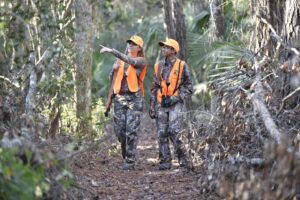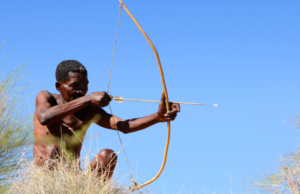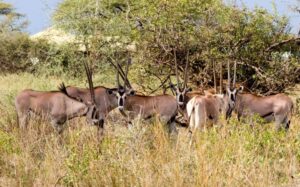Falconry, the art of training and hunting with birds of prey, has a rich history and diverse practices across the globe. Among the various birds used in this sport, kestrels, particularly the American kestrel, hold a unique position. Known for their agility, intelligence, and adaptability, kestrels offer both challenges and rewards to falconers. This article delves into various aspects of falconry using kestrels, from training techniques to hunting strategies, and provides insights into the effective management and enjoyment of these magnificent birds.
Key Takeaways
- Kestrels are versatile and adaptable in falconry, employing various hunting methods including hovering and kiting.
- American kestrels, while small, are not just beginner birds; they require a skilled falconer to harness their full potential.
- Training kestrels involves a progression from basic handling to advanced hunting techniques using lures and kites.
- Legal and ethical considerations are crucial in falconry, and kestrels are subject to specific regulations.
- The falconry community offers a wealth of resources, from online platforms to workshops, for both novice and experienced falconers.
Understanding Kestrels in Falconry

Characteristics of Kestrels
Kestrels, often regarded as a beginner bird in falconry, exhibit unique traits that set them apart from other raptors. They are smaller, with less powerful wingbeats but are more buoyant in flight. Sexually dimorphic plumage is a distinctive feature, with males and females showing different color patterns even before they fledge. This makes them not only fascinating but also visually appealing partners in falconry.
Training and Handling
Training kestrels for falconry requires patience and skill. The process involves several steps, starting with basic obedience to more complex hunting techniques. Kestrels respond well to positive reinforcement, making them ideal for falconers who are willing to invest time in Raptor bonding rituals. Their size and agility allow for a unique training experience compared to larger raptors.
Legal Status and Regulations
Kestrels are protected under various wildlife conservation laws, and falconry with kestrels is regulated to ensure their welfare. In the United States, specific permits and adherence to federal regulations are required. It’s crucial for aspiring falconers to understand these legal frameworks to responsibly engage in falconry with kestrels. This ensures the preservation of both the sport and the species.
The Role of American Kestrels in Falconry

Historical Context
American Kestrels have been integral to the sport of falconry for centuries, particularly in the United States where they serve as an ideal bird for novice falconers. Their small size and agile nature make them perfect for both countryside and urban falconry, adapting well to various environments. Historically, they were considered an ideal analog of the Eurasian kestrel, making them a popular choice during the sport’s revival in the U.S.
Comparison with Other Raptors
American Kestrels, while smaller and more delicate than many other raptors, exhibit a unique combination of characteristics from falcons, hawks, and accipiters. This versatility allows them to employ a variety of hunting methods, including hovering and kiting, which are not commonly seen in other birds of prey. Their ability to adapt to different hunting styles makes them a favored choice in modern falconry.
Current Trends and Practices
In contemporary falconry, American Kestrels continue to be highly valued for their hunting prowess and adaptability. The main prey for these birds in falconry includes European Starlings and House Sparrows, commonly found in diverse settings from backyards to farms. Their ability to hover and kite in mid-air is particularly appreciated, as it adds a dynamic aspect to falconry displays and hunting sessions. The ongoing popularity of American Kestrels in falconry underscores their enduring appeal and effectiveness as a hunting bird.
Training Techniques for Kestrels

Basic Training Steps
Kestrel training begins with manning, which involves getting the bird comfortable with human presence. This is followed by basic commands and tethering practices. The training progresses to short flights and recall training, essential for establishing control and trust between the falconer and the bird.
Advanced Hunting Skills
To develop a kestrel’s hunting skills, falconers must focus on enhancing the bird’s natural instincts. This includes training in various environments and introducing live prey in controlled settings. The goal is to simulate real hunting scenarios to improve the kestrel’s agility and precision.
Use of Lures and Kites
Lures and kites are vital tools in kestrel training. They are used to mimic the movements of prey, helping to hone the kestrel’s hunting techniques. Regular practice with these tools ensures that the kestrel remains engaged and sharpens its predatory skills.
Note: Consistent training sessions are crucial for the success of any kestrel flight training program.
Hunting Strategies with Kestrels

Prey and Predation Methods
Kestrels, as highly-skilled predators, utilize a variety of hunting techniques to capture their prey. They often employ a ‘sit-and-wait’ strategy from elevated perches, which allows them to survey open areas for small mammals and insects. Once prey is spotted, they execute a swift stoop from their perch to seize it, primarily on the ground.
Hovering and Kiting Techniques
Kestrels are unique among raptors for their ability to hover in mid-air by facing into the wind. This technique is especially useful in areas where perches are scarce. Hovering enables kestrels to maintain a vantage point and pounce on unsuspecting prey below. This method is less frequently used but is a testament to the kestrel’s adaptability and skill in hunting.
Team Hunting Dynamics
Kestrels can also be trained for team hunting, which involves coordination with other kestrels or avian species. This strategy enhances the effectiveness of hunting, allowing kestrels to cover more area and effectively flush out prey from hiding spots. Team hunting showcases the social aspect of kestrel hunting, emphasizing the importance of cooperation among avian hunting companions.
Equipment Essentials for Kestrel Falconry

Gloves and Jesses
Gloves are essential in kestrel falconry to protect the falconer from the bird’s sharp talons. Jesses, which are thin straps attached to the bird’s legs, help in managing and controlling the kestrel during training and hunting. These items are crucial for the safety and effectiveness of handling kestrels.
Perches and Hoods
Perches provide a comfortable resting place for kestrels, while hoods are used to cover the bird’s eyes and keep them calm. Proper use of these tools is vital for maintaining the bird’s well-being and readiness for falconry activities.
Tracking and Safety Gear
To ensure the safety of kestrels during falconry, various tracking and safety gear are employed. This includes radio transmitters, which allow falconers to locate their birds if they fly out of sight. Safety is paramount, making this equipment indispensable in modern kestrel falconry.
Challenges and Considerations

Size and Delicacy Concerns
Kestrels, being among the smallest raptors used in falconry, present unique challenges due to their size and fragility. Handling must be particularly gentle to avoid injuries, and equipment must be appropriately sized to ensure their safety and comfort.
Weather and Environmental Factors
Kestrels are sensitive to harsh weather conditions, which can significantly impact their performance and health. Falconers must be vigilant in monitoring weather forecasts and be prepared to adjust their training and hunting schedules accordingly.
Health and Maintenance
Regular health checks are crucial for maintaining the well-being of kestrels in falconry. This includes frequent monitoring for signs of illness or distress, maintaining a balanced diet, and ensuring that their living conditions are clean and secure.
Community and Resources

Online Platforms and Forums
The falconry community has embraced online platforms and forums as vital spaces for sharing knowledge and experiences. These digital venues offer a plethora of resources, ranging from beginner tips to expert discussions, making them invaluable for falconers at all levels.
Educational Materials and Workshops
Educational materials and workshops are crucial for both novice and experienced falconers. They provide structured learning opportunities and hands-on experiences that are essential for mastering the art of falconry with kestrels.
Connecting with Experienced Falconers
Connecting with experienced falconers can significantly enhance your learning curve and provide practical insights that are not readily available in books or online. This mentorship is often the key to successful falconry practices.
Dive into the heart of the hunting community with our ‘Community and Resources’ section at Hunting and Nature Central. This dedicated space is your gateway to connect, learn, and share experiences with fellow hunting enthusiasts. Whether you’re looking to join discussions, participate in events, or simply expand your knowledge, our platform is designed to support your journey. Visit us today and become part of a vibrant community committed to responsible and ethical hunting practices.
Conclusion
In conclusion, falconry with kestrels offers a unique and engaging experience for both novice and experienced falconers. These small yet versatile raptors demonstrate remarkable hunting abilities, adapting techniques from various birds of prey to excel in their environment. Whether flown in urban settings or the countryside, kestrels prove to be not just beginner birds but dynamic participants in the sport of falconry. Their ability to hover and kite adds an exciting dimension to falconry, showcasing their prowess and adaptability. As the sport continues to evolve, the role of kestrels in falconry is likely to expand, offering new techniques and experiences for falconers around the world.
Frequently Asked Questions
What makes kestrels suitable for falconry?
Kestrels are small, versatile falcons that can adapt to various hunting methods, including hovering and kiting, making them suitable for both countryside and urban falconry. They are often regarded as a beginner bird but offer a lot of potential for skilled falconers.
Are there any legal considerations for using kestrels in falconry?
Yes, American kestrels were listed as one of the species allowed for licensed apprentice falconers in the federal regulations promulgated in 1976. However, some regions may have specific rules, such as the Florida Game & Fresh Water Fish Commission’s 1992 rule that excludes kestrels as legal birds for apprentice falconers.
What are the typical prey for kestrels in falconry?
Kestrels commonly hunt smaller birds, mice, and insects. In falconry, they are often used to target European Starlings and House Sparrows.
How are kestrels trained for falconry?
Training kestrels involves basic steps like conditioning to the glove and lure, followed by more advanced hunting skills. Techniques such as using kites to raise pitch and training them to wait-on are being explored to enhance their hunting abilities.
What equipment is essential for kestrel falconry?
Essential equipment includes gloves and jesses for handling, perches and hoods for resting and transport, and tracking and safety gear to monitor the kestrel during flights.
What are some challenges in training kestrels for falconry?
Challenges include their small size and delicate nature, which can make them unsuitable for novices. Weather and environmental factors also significantly impact their ability to hunt and train effectively.





